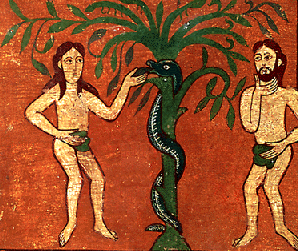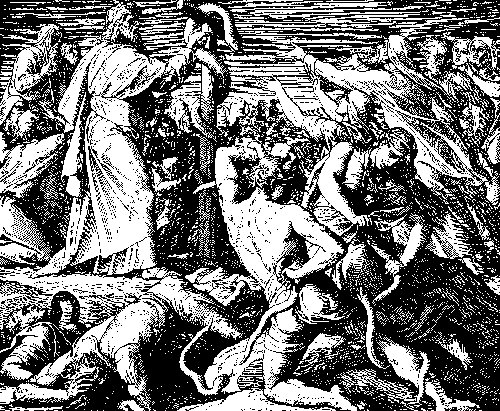2Ti 3:8-9 Who were Jannes and Jambres, and in what way did they oppose Moses? See Ex 7:11,22, 8:7. How is the way in which religious pretenders oppose the truth similar to the way in which Jannes and Jambres opposed Moses? See 2Ti 3:5. Are such able in their form of godliness to meet some of the same needs and perform some of the same miraculous signs and wonders performed by God’s servants? See also 2 Thess 2:9. In what way have the practitioners of the science and modern medicine of our own day become similar to the soothsayer priests of Moses’ day in opposing the truth by being able to duplicate many of the Lord’s miraculous signs? Note: the Greek word the translators of the LXX chose to translate “sorcerers” in Ex 7:11 and “magicians” in Ex 9:11 is pharmakos from which we get our word “pharmacy”.
In spite of the religious veneer of those like Jannes and Jambres, what is the true state of their mind and faith? See 2Ti 3:8. Note: NASB “depraved” = KJV “corrupt” and means literally “destroyed”; NASB “rejected” = KJV “reprobate” and means literally “not standing the test”. Considering that evil men and imposters will progress from bad to worse (2Ti 3:13) and make further progress in ungodliness (2Ti 2:16), what encouragement does 2Ti 3:9 offer God’s people? Is there a limit as to how far God will allow the wicked to progress? See also Is 57:20, Job 38:8-11, Ps 104:9, Prov 8:29, Jer 5:22. In what way did the folly of Jannes and Jambres become obvious to all? See Ex 7:12, 8:18-19, 9:11. In what similar way will the folly of those with only a form of godliness also become obvious? In spite of the great promise of today’s science and modern medicine, why is it folly to place our trust in its practitioners instead of in God? Cf. Hos 5:13, Jer 30:12-15, 46:11.
Consider that the emblem modern medicine has lifted up as a symbol of its curative powers is the Caduceus or Staff of Asclepius, which not only reminds us of the staffs of Jannes and Jambres that became serpents but also of the brazen serpent Moses was commanded in Num 21:4-9 to set upon a standard in order that all who were bitten by the fiery serpents[1] might look to it and live. What did the serpent upon the standard Moses lifted up represent, and how is that very different from what the Caduceus or Staff of Asclepius has come to represent? See Num 21:9, John 3:14. Note: the serpent on the standard Moses set up does not represent Jesus, but the curse of the Law that was put upon Jesus in order that by His stripes we might be healed (see Gal 3:13,1 Pet 2:24); the standard (banner, signal, ensign) upon which the serpent was put is what represents Jesus (see Ex 17:15 and cf. 17:9, Is 11:10,12, 62:10-12 for the same Hebrew word). In contrast, the Staff of Asclepius represents all of the power to heal that derives from the subtle craft of the serpent (Gen 3:1) and his “wisdom” first promised to Eve (Gen 3:6, cf. Mat 10:16, 2 Cor 11:3). In what ways did the faith of the Israelites become misplaced in the brazen serpent Moses lifted up, and how is that similar to the way in which the faith of many today has become misplaced in the Caduceus of modern medicine? See 2Ki 18:4. In the time of our affliction when we are chastised by the Lord for our sins as were those Israelites in the wilderness (and who of us is without sin?), are we careful to look in faith to the cross where the curse of the Law was laid upon the savior, or do we instead look to the Staff of Asclepius and the serpent-inspired wisdom of this world?
1. The Hebrew term used for “fiery” is seraph which is also used in Is 6:2,6 for the seraphim, and in Is 14:29 and 30:6 for “flying serpents” which indicate the seraphs had wings and could fly. The root word for seraph is always used of burning; these sound like fire-breathing dragons! Cf. Rev 12:9.↩

